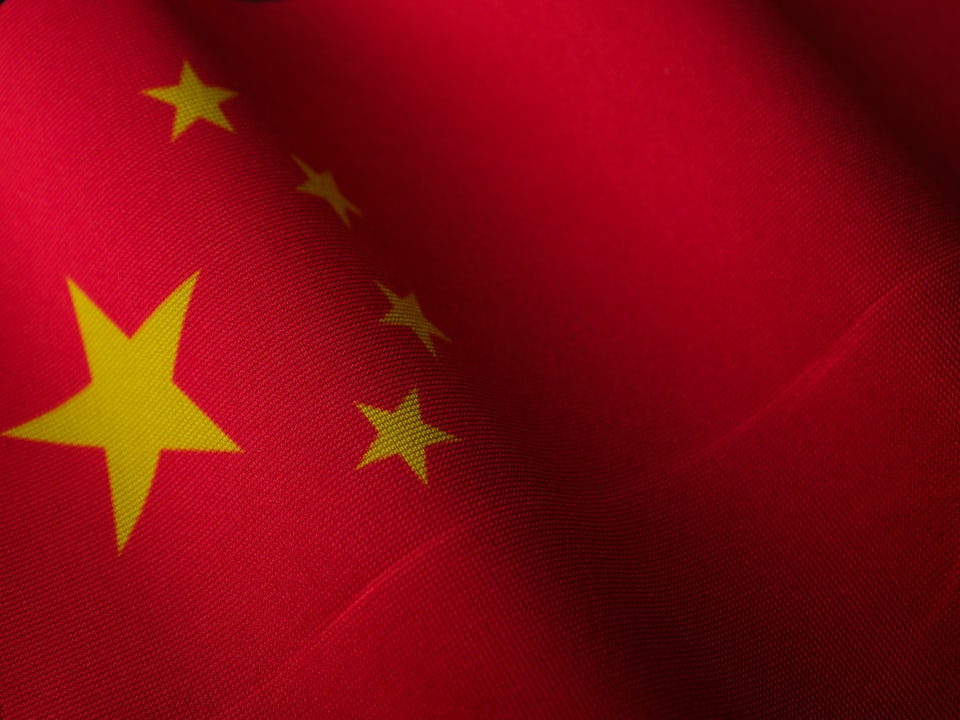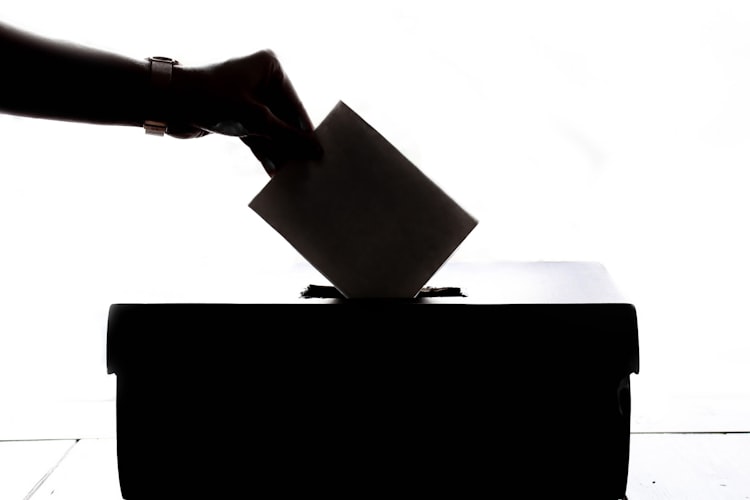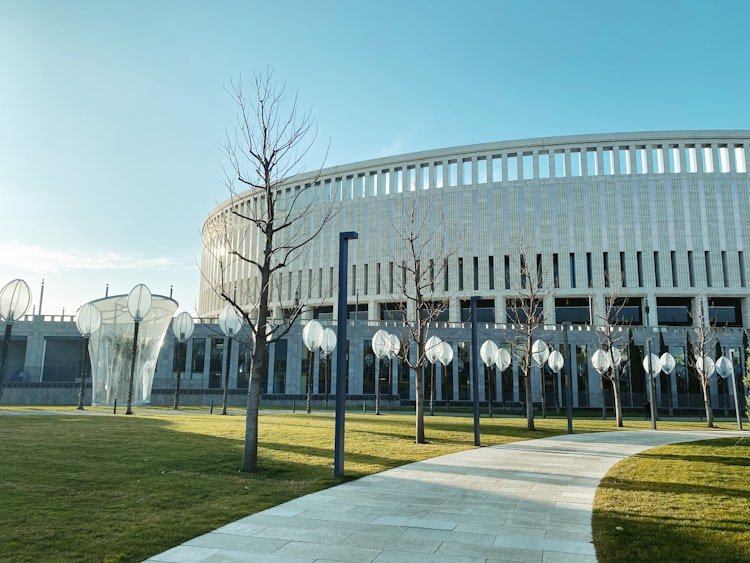Four Similarities Between Chinese and Russian Propaganda ... and One Big Difference

After the 2016 Presidential Election and the invasion of Ukraine, Americans have understandably been preoccupied with Russian propaganda.
Recently, however, the U.S. Department of State released an eye-opening report on the scope and ambition of Chinese information campaigns: “How the People’s Republic of China Seeks to Reshape the Global Information Environment.”
According to the report, the People’s Republic of China’s (PRC) information strategy includes five main components:
- Leveraging Propaganda and Censorship
- Promoting Digital Authoritarianism
- Exploiting International Organizations and Bilateral Relationships
- Pairing Cooptation and Pressure
- Exercising Control over Chinese-Language Media
The PRC shares most of these elements with the Kremlin’s own information strategy, and the similarities can tell us much about how authoritarian regimes operate today. The difference, however, may be even more telling, because it concerns the future of the global information environment.
Leveraging Propaganda and Censorship
The PRC has dramatically expanded its media operations over the past ten years. The State Department reports that China News Service, the party’s official new agency, now operates 162 bureaus in 142 countries, all of which receive state-friendly broadcasts.
The PRC is also buying up existing media properties and providers. By 2018, it had invested 3 billion euros in European media, making it a majority owner of outlets like the Czech Empresa Media, a TV and print conglomerate. Afterwards, the State Department claims, Empresa “ramped up favorable coverage of Beijing.”
Beyond single media properties, the PRC has also invested in large-scale platforms, like cable providers. For instance, the PRC now owns 60% of the African media company StarTimes, which offers digital and satellite television. Consequently the PRC can beam friendly broadcasting into the homes of 10 million subscribers in Africa.
As the PRC has expanded its media holdings, it has also expanded its opportunities for censorship. Its technological exports can also be useful for censorship, and even harder to detect. In 2021 the Lithuanian National Cyber Security Centre found that Chinese-made phones were blocking phrases like “Free Tibet” and “Long Live Taiwan Independence.”
When it can’t stop information from appearing, the PRC tries to drown it out. The preferred method is “flooding,” in which bots and trolls swamp critical views or information with spam posts. The tide of opinion and misinformation makes inconvenient facts and criticism harder to find.
All of this is strikingly similar to Russia’s overall information strategy. Kremlin-friendly Russia Today has bureaus across the globe, Russian money funds media ventures in the U.S.A., and Putin’s famous troll army (The Internet Research Agency) operates behind the curtains. Censorship and propaganda happen through both official, state-aligned, and clandestine channels.
The similarities between the Chinese and Russian models suggest that authoritarian regimes pursue multiple means to the same ends. They are equally happy to expand their own media companies or pick up local outlets, so long as the coverage is always slanted in favor. Less openly, they are willing to preempt debate by denying it a platform or burying it as soon as it appears.
Exploiting International Organizations and Bilateral Relationships
China uses its influence in international organizations to suppress criticism and amplify its preferred narratives. According to Human Rights Watch, the PRC has pressured the United Nations (UN) to cut funding for human rights officers at UN missions and “has worked consistently and often aggressively to silence criticism of its human rights record before UN bodies.” It also uses its influence within the UN to promote its own initiatives. For example, the PRC uses its positions on the UN Department of Economic and Social Affairs to talk up its Belt and Road Initiative, tying it to the UN’s Development goals.
And why make your own case when someone else will do it for you? Russian media routinely echoes PRC talking points about Taiwan, while Chinese media returns the favor by describing the “special action” in Ukraine as “de-Nazification.”
Russia, too, influences international bodies and enjoys support from other authoritarian regimes. It partners not only with the PRC but also with India, Brazil, and others. Although the Kremlin sometimes shows contempt for international organizations (it recently quit the Council of Europe in a huff), it retains its seat on the UN Security Council, and with that seat a veto over any council action. As Ukrainian President Zelensky pointed out last week: Russia’s veto on the security council effectively neuters it.
China and Russia’s engagement with international bodies and allies suggest that authoritarian regimes are not about to turn inward. Instead, by banding together to confirm each other’s propaganda, and by gumming up the work of international organizations, they at once find support for their own information campaigns and frustrate the opposition. At the same time, China's Belt and Road as well as the BRICs meetings are emerging as alternative international institutions. -In propaganda as in sports, a good offense is the best defense.
Pairing Cooptation and Pressure
Authoritarian regimes use carrots as well as sticks. As the State Department writes: the PRC offers “seats on corporate boards and appointments to academic institutions” to foreign political and government figures. These politicians enjoy prestige and financial rewards. The tacit price is self-censorship, or even vocal support of PRC policies. The PRC also forges links with potentially friendly political parties, preferably ones that are in power. The State Department counted ties with 600 parties in 160 countries. Most are in the developing world.
On the flip side, China uses its economic might to push back against criticism. When the clothing line H&M expressed reservations about involuntary labor in the Uyghur region of Xinjiang, PRC media loudly criticized the brand, and its sales fell 41%. H&M released another statement, “omitting Xinjiang and emphasizing the importance of the PRC to its business.” The PRC also routinely expels or bars critical journalists.
All of these tactics are familiar from the high days of the Soviet Union, whose information strategy guides Putin’s today. The USSR supported numerous parties within western democracies, cultivated relationships with friendly intellectuals, and harassed western journalists.
As in the days of the Soviet Union, then, information warfare takes place with little regard for national borders. As the State Department concludes, “The PRC’s efforts to co-opt elites, foreign journalists, and subnational groups are paving the way for a cohort of voices beholden to Beijing.” By cultivating friendly voices, and silencing critics, they are once again trying to create a more favorable media environment–and ideally a uniformly positive one.
Exercising Control over Chinese-Language Media
According to the State Department, although the PRC influences foreign media whenever it can, “The PRC’s appetite for interference and ability to directly impact the lives of producers and consumers of Chinese-language media are much more significant.” A Financial Times investigation found that more than “200 overseas Chinese-language media outlets reprinted or broadcast PRC … media content.”
The PRC produces massive amounts of low or no-cost Chinese-language content. It publishes this material on WeChat, the messaging service that is especially popular in both mainland China and the Chinese diaspora. In a 2021 survey of Australian Chinese speakers, 86% of respondents said they got news directly from WeChat (though only half trust it).
Pro-PRC groups and companies also organize boycotts against critical Chinese-language news sources. A 2016 report in the Sydney Morning Herald found that “a PRC official … instructed local companies to withdraw advertising contracts from an independent Chinese-language publication.” PRC officials can also censor critical foreign WeChat users, severing their connections to family on the mainland.
The Kremlin, too, seeks to dominate Russian-language media, although most effectively within its own borders. Since the invasion of Ukraine, a secretive institution called the Main Radio Frequency Center has blocked 95 Russian-language media outlets from the Russian internet, and removed almost 12,000 news stories or posts. This censorship follows Putin’s well-established pattern of exercising control over the media. Chinese and Russian propaganda efforts appear to share the same goal: a uniformly supportive information environment.
Yet here the two countries also start to differ. As seen above, Putin’s efforts to control Russian-language media are mostly effective within Russia itself. Russian state media does not have the same reach as China News Service, nor does it have a social media platform like WeChat that is so popular around the world.
Promoting Digital Authoritarianism
Which brings us to the major difference between Russian and Chinese information warfare. Far more than Russia, China is an exporter of what the State Department calls “technologies for surveillance and censorship, often through capabilities bundled under the umbrella of ‘smart’ or ‘safe’ cities.”
Of course, Russia also has an extensive online surveillance program, which extends beyond the internet to facial recognition, etc. But Beijing’s system is arguably more sophisticated–and for sale. As of 2019, the PRC had lent its surveillance systems to 102 nations, 11 of which broadly copied “PRC information laws and techniques,” the State Department Found. For instance, a PRC technology firm pitched a Nigerian state government a system that would allow for “preemptive enforcement of the law,” by constantly running facial recognition and license plate ID-programs, allowing the government to spot criminals (or political dissidents).
Beijing also pitches technology that allows governments to route all social media activity through government servers. The opportunities for censorship are legion. Most importantly, the censorship could take place before the media content was even posted, preemptively censoring critical views and leaving no alternative to regime propaganda (recall those smart phones in Lithuania that were programmed to censor phrases like “Free Tibet”). A 2021 report by the Committee to Protect Journalists claimed that 18 governments, beside China, were already using this technology.
Furthermore, when the PRC provides the technology and digital infrastructure, it also has a chance to gather enormous amounts of data. Starting from low level network monitoring, which could potentially erase anonymity, to higher level media analysis, which could easily spot changes in the aggregate information environment, the PRC can identify potential trouble-makers and refine its own propaganda for the greatest impact.
Traditionally, propaganda has come out of an identifiable outlet. It is the poster on the wall, the dictator’s voice over the loudspeaker, the carefully edited images on the television. It enters into an existing media environment. By developing its surveillance technologies and digital infrastructure, the PRC could go further. It could mold the entire media ecosystem. In the words of the State Department report, “The PRC’s promotion of digital authoritarianism is reshaping the global information environment … The technology and forms Beijing exports is creating an architecture for targeted messaging and identification of critical voices overseas.”
Conclusion
In most cases, there is little new about the PRC and Kremlin’s information campaigns. Propagandists throughout the 20th-century broadcasted their own views over every channel available to them and silenced dissidents; they exploited international bodies for their own ends; they co-opted or harassed the opposition; and they exercised tight control over native-language media. All of these are efforts to influence the media ecosystem, shifting the weather of public sentiment in one way or another.
But what if the regime could not only influence the weather, but control the whole climate? Every authoritarian would surely like to create a media environment in which only regime-approved information and voices were heard, and therefore seemed incontrovertible. This could prepare the authoritarians subjects to believe, or do, anything. In his magisterial Propaganda: The Formation of Men’s Attitudes, the French sociologist Jacques Ellul pointed out that aside from direct agitation, propaganda could also work more slowly, and more insidiously. “It must be continuous, slow, imperceptible. Man must be penetrated in order to shape such tendencies. He must be made to live in a certain psychological climate.”
New surveillance and censorship technology makes it more possible than ever before to control our psychological climate. Older technologies allowed regimes to insert propaganda into the media system, or suppress certain ideas when they appeared, but as more and more human communication takes place online, the owners of digital platforms have an increasing amount of power over what people can see.
If so, then in the future the most important parts of information warfare might not be individual propaganda campaigns. The decisive conflict might be over the design and acceptable use of digital infrastructure and platforms, as these can change the information climate at a more fundamental level.




